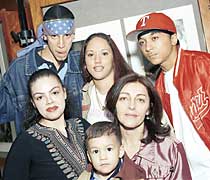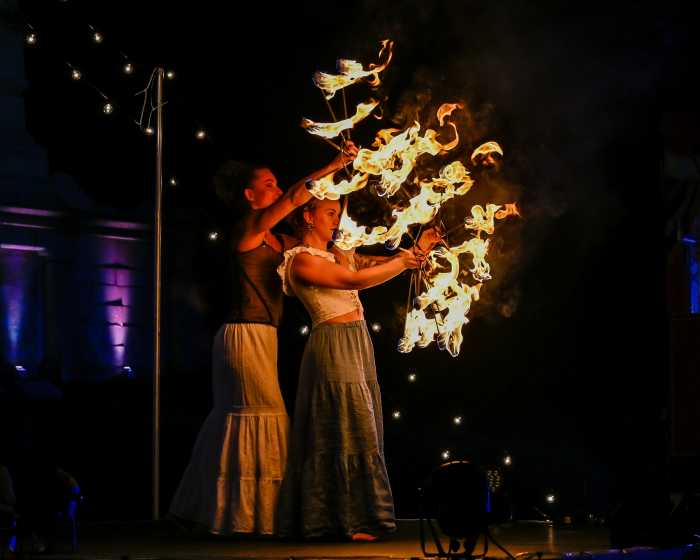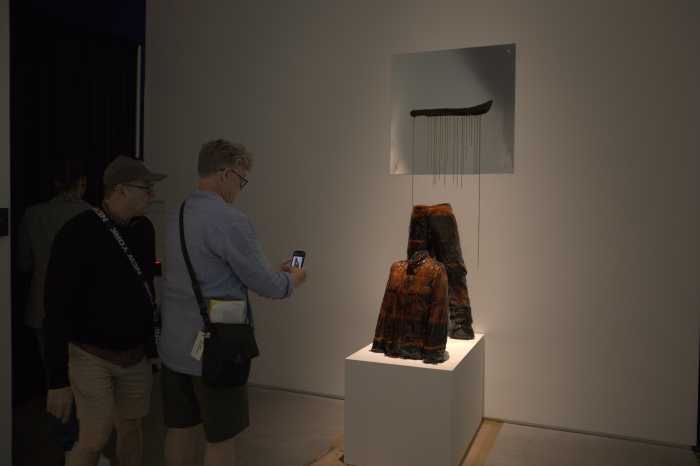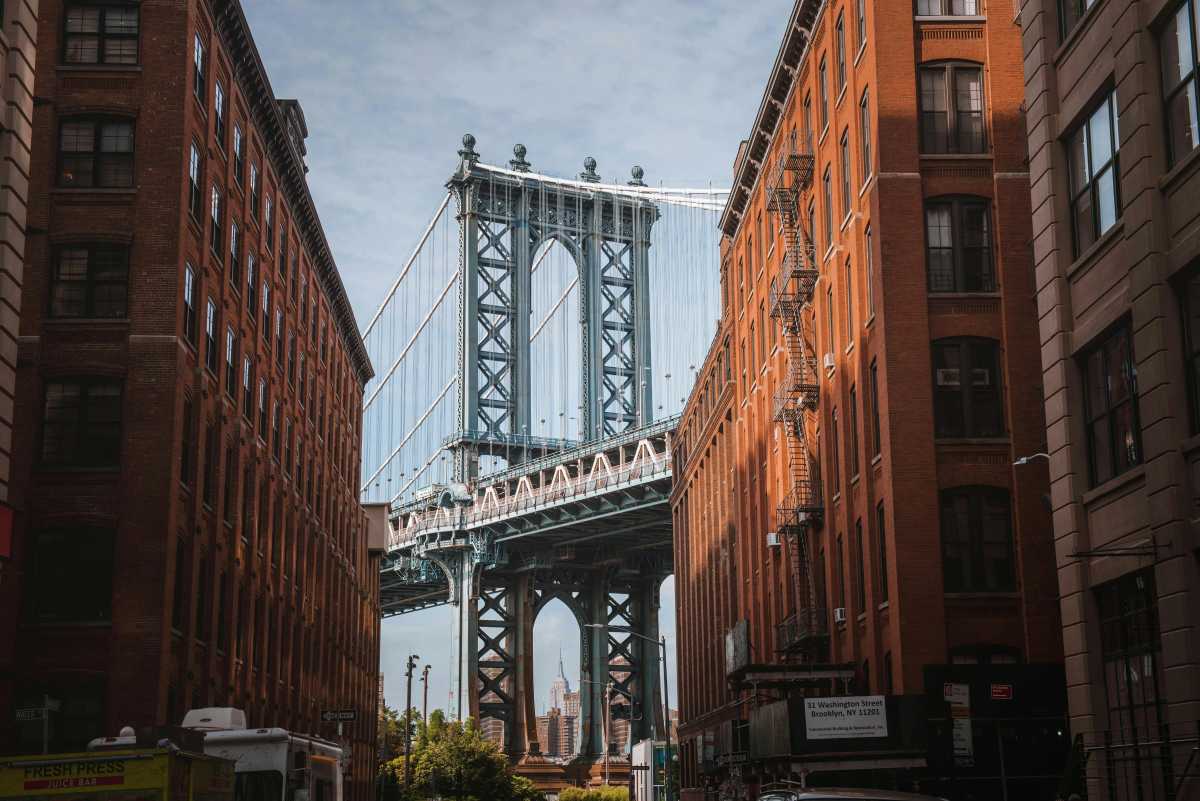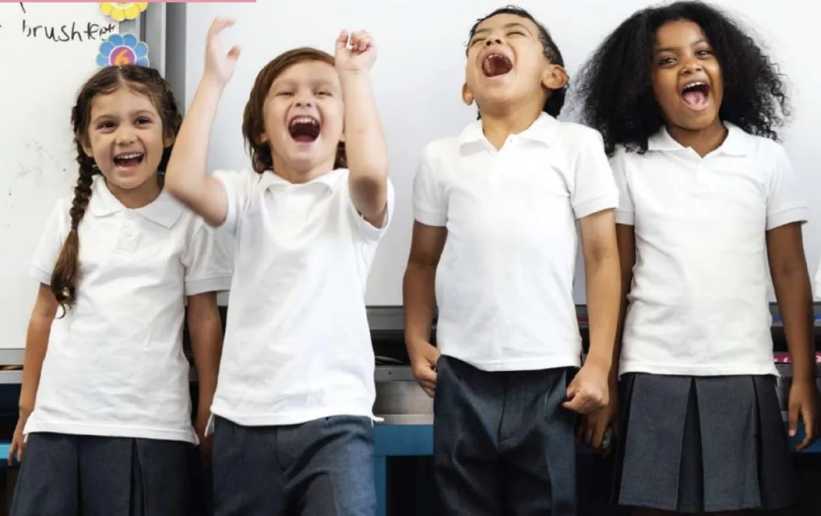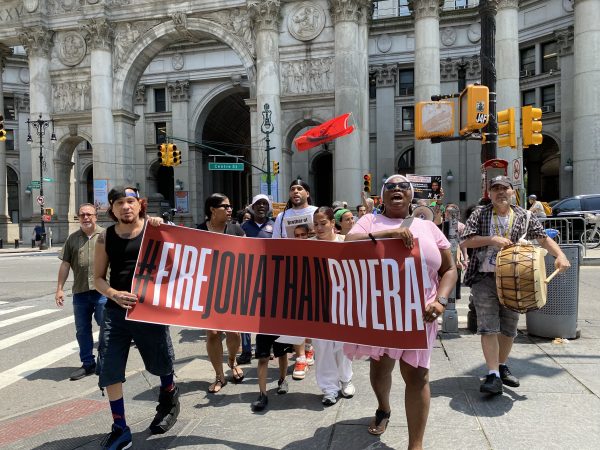Babies crying, machines beeping, voices
echoing off the walls – welcome to the Brooklyn Public Library,
where no one is quiet except for a small group gathered between
the checkout counter, the information desk and the periodicals
room.
"Betty," her face framed by dark hair, solemnly beckons.
"I am a proud, strong, 22-year-old Puerto Rican, born and
raised in Brooklyn," Betty declares in a statement posted
by her portrait. "My people have instilled in me the beauty
of our heritage and identity. I believe our lives are in the
hands of God. Growing up in the neighborhood, I have seen things
that I have never had to go through myself. I am a very spiritual
person and I hear a calling to serve my people."
"Betty" (Lindsay Park, 2000), is one of 51 intimate
black-and-white photographs in the series "Beyond Grand
Street: A Journey Through Young Lives in Latino Williamsburg,"
by French-born artist Régina Monfort. The show is on view
at the library’s Central branch through April 27.
Arranged in five sets of freestanding panels, Monfort’s photographs
tell the story of a neighborhood and its children. Unlike "Betty,"
most are unaccompanied by text. In "Young Family on Rooftop"
(2000) a trio holds hands. Their physical bodies unseen, they
cast a unified shadow on a grafitti-covered wall.
Two young people – Monica and Ricky – figure prominently in the
exhibit. "Monica, Jennifer, Biggie and Nadia" (Broadway,
1999) shows the girls gathered on the street corner. The quartet
wear identical earrings, gold doorknockers and hairstyles – tight,
twisted rows pulled together on top of the head in a loose pile
of ribbon-like curls. In front of Monica is a baby carriage.
Monica stands alone in the next photograph ("Monica,"
Lindsay Park, 1998). Her image is reflected in the mirror, hair
unfurled.
"I am going to make it," the text reads. "I want
to finish college and go on studying. I want to move to Florida
and then to California. It’s going to be me and my son."
On the next panel a car bears a message on black-tinted windows:
"R.I.P. Monica We Love You." The 19-year-old died of
a gunshot wound on New Year’s Day 2000.
In "Ricky and His Mother Carmen on New Year’s Day"
(1995) Ricky looms large, his hand to his head as if in pain.
His mother looks at him from the couch. "Ricky" (Supreme
Court, 2001) shows the young man alone, slouched on a bench beside
a closed courtroom door.
"Ricky is both the first person I photographed and someone
who has remained at the heart of my work," Monfort explains
in the exhibit’s opening statement. "He and his family are
to be credited for my initial acceptance as a photographer in
their neighborhood."
Asked why she focused so much on Ricky and Monica, Monfort says,
"I believe in their uniqueness." It was their resilience
that drew her to them as subjects. Today, Monfort visits Ricky
regularly "with or without [her] camera." He is working
in construction and is still in love with Adriana, who also appears
in the exhibit.
"I have realized my life’s work seems to be totally directed
towards teenage culture," Monfort says. On the library’s
Web site she admits that, as a child, her image of Latino culture
was based on a single source – the movie "West Side Story."
Monfort’s photo-documentary, which she began in 1994, is multilayered.
"I have lived in Williamsburg – six blocks away from Grand
Street – for over 10 years," says Monfort. "I do not
pretend to represent the whole Latino community. I am speaking
about kids I have met."
Many of them came to the show’s opening. "The reality in
my photographs is more often sad than happy," Monfort says
when asked how the teens responded. "Over the years, it
has been my experience that the images led the people in my photographs
to reflect upon their own selves, which can be difficult."
When she began the project, Monfort worked in the studio of photographer
Irving Penn. She currently works freelance for Richard Avedon.
Her work has been shown at the Museum of the City of New York
("New York Now," 2000), Yale University Art Gallery
("The Persistence of Photography in American Portraiture,"
2000) and the Brooklyn Museum of Art ("New Acquisitions,"
2001). "Beyond Grand Street" is Monfort’s first solo
show in the United States.
A black composition book with its pages ripped from the spine
is attached to the exhibit’s opening panel with ragged twine.
Though barely visible, visitors find it and share their impressions
inside.
Nine-year old Akilah, from the Bronx, writes: "One photograph
I really liked was ’Shorty on the Fence.’" In it, a small
girl in a skirt climbs a chain-link fence. "I liked that
one because I’m short, too, but that photo shows a girl who ain’t
afraid of her personality."
"I believe you depicted Hispanics in only a negative way,"
writes Iris Franco. "I would like to depict your race negatively."
But an anonymous viewer had this to say: "One word – POWERFUL
– Thank you. Voices were heard."
No one at the library complained about the noise.
"Beyond Grand Street: A Journey
Through Young Lives in Latino Williamsburg," photographs
by Régina Monfort, is on view in the Grand Lobby of the
Brooklyn Public Library’s Central branch, Grand Army Plaza, through
April 27. The library is open Monday through Thursday, 9 am to
8 pm; Friday and Saturday, 9 am to 6 pm; and Sunday, 1 pm to
5 pm. Admission is free. For more information, call (718) 230-2100
or visit www.brooklynpubliclibrary.org.


